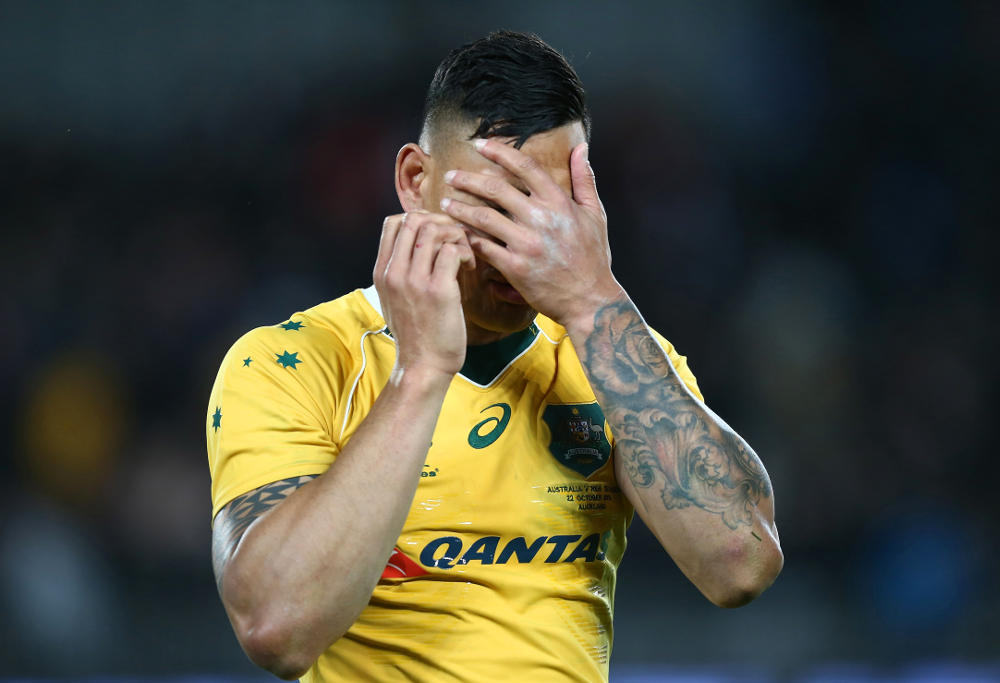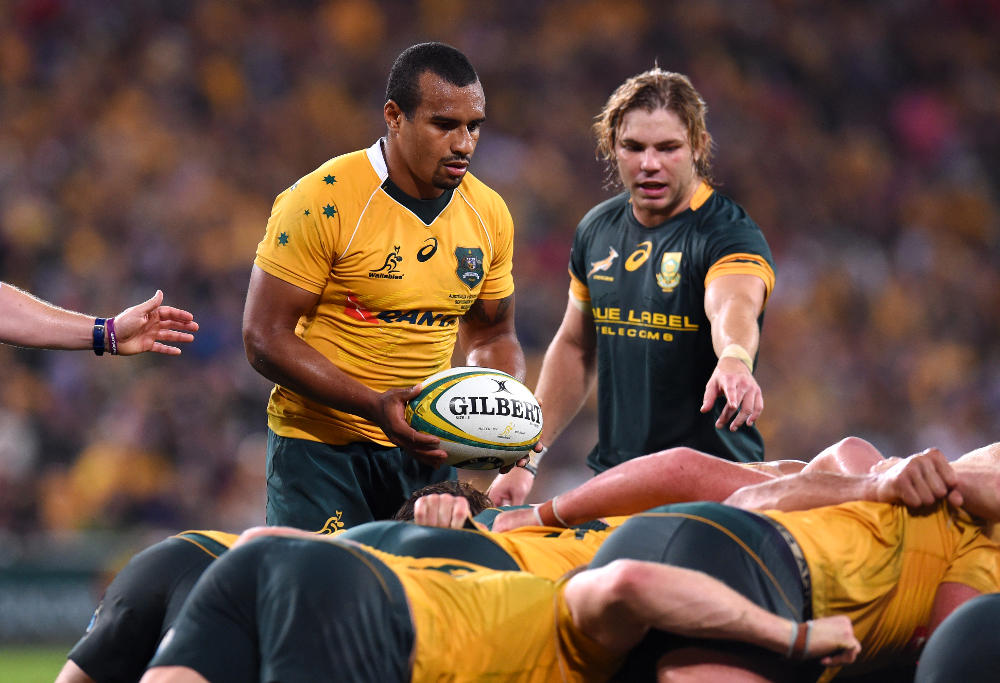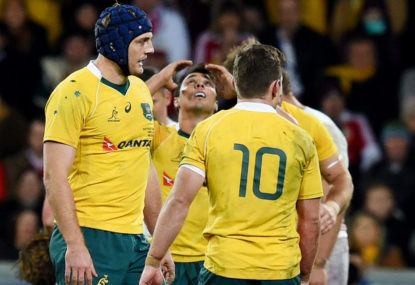Recently, Riordan Lee made the mistake of asking Roarers, who are notoriously shy with their opinions, how to fix Australian rugby.
With the added incentive of the announcement that the ARU supports a Super Rugby format with only four Australian teams, I needed an article to express the level of change required.
National curriculum
With the saving of millions of dollars each year about to be poured into the grassroots, a consistent style, and approach to coaching that style, has to be at the forefront of the ARU’s approach.
From schoolboys, to club, NRC and Super Rugby franchises, a national curriculum needs to be implemented to ensure that clubs around the country are producing players capable of stepping up into a world No.1 Wallabies squad.
To get there, there are fundamentals of the game, there is a basic foundation which must be laid, which is a blueprint for the Australian style of rugby. We hear about Aussie rugby and running rugby, but there are fundamental differences in the way the game is played from team to team, and state to state based on the particular desires and predilections of the coach in charge.
[latest_videos_strip category=”rugby” name=”Rugby”]
Rugby brains far larger than mine need to identify not only the style and patterns of play that Australian teams should develop and train, but at what invitation from the opposition should we vary our point of attack (or defence for that matter).
What are the key tenets of the style Australian teams should play? How should school and club teams be coached to ensure that everyone is on the same page?
The ARU could do a lot worse than get Ewen McKenzie, Bob Dwyer, Alan Jones and Nick Farr-Jones together to put down a blueprint for what Australian rugby should look like on the field.
Under what conditions do we kick for territory? When do we run the ball from our 22? When do we box kick and why? Basic questions like this should form part of our national education program, which equips our players to identify the situation in front of them and play according to a set plan which the entire team understands. Too often Australian teams seem to run the ball based on feel, box kick based on a lack of momentum, and counter-attack rarely!
Australian teams aren’t equipped to play what’s in front of them. Players on an individual level perhaps see the opportunities brilliantly, but rugby is a team game, and if Quade Cooper (as an example) sees every potential gap in the defence, and his support runners see nothing of the sort, we end up with dropped ball, players over running passes and ugly, unattractive rugby.
Selection criteria
As a follow on from the national curriculum and style, selection criteria must be introduced to ensure that by the time players get to the professional level, they are capable in every facet required in their positions. Too often at the moment, the Wallabies are required to pick players in key positions with glaring deficiencies in one or more of the primary skills of that position. I give as examples, Will Skelton who can’t jump, and Israel Folau who somehow (inexplicably really) can’t kick.

For representative level, even in junior teams, we must tell our aspiring pros what the minimum standards are, and what they need to do to be selected.
By having performance criteria for our juniors and telling them what they are for the skill basics, we ensure that every aspiring Wallaby who comes through the ranks focuses on the complete set of skills required for that position in the national setup, and doesn’t get through junior ranks on just being an athlete, but being a rugby player.
As an example, our outside backs must be able to kick, pass, be safe under the high ball, and run with speed! Too often, Australia has had a deficit it not just one, but two, and sometimes three of these areas. For a nation that prides itself on running rugby, and creative play, picking slow and or unskillful players at the back, is a road to ruin. By placing our juniors and club players on notice that if any of these is a deficit, they won’t be picked for the Wallabies, we guarantee a focus on the core skills.
With our centres, we need to decide whether to play two ball-running centres, or a playmaker and ball-running combination. If we’re playing the combination of styles, does the creative player play at 12 or 13? For me, playing with a skilful 12 (in the mould of Matt Giteau) playing with a damaging, ball-running 13, with an eye for defence, is the key to shoring up our centres.
Similarly, our locks should all be able jumpers in the lineout, and step up as the leader of the lineout in case of injury. They need to be strong scrummages and have a high workrate around the field. I’d love it if all of our forwards could offload, but I’d settle for consistent workrate and timely arrival at the breakdown!
Skills
Australian rugby is consistently second best in the fundamentals of the game. When was the last time that you remember an Australian backline comprehensively outclassing the All Blacks for the skills? Whether it’s passing, kicking, or tackling, the Wallabies (and our Super Rugby teams) always seem to have caveats around their basic skills.
Israel Folau is apparently the most skilled Wallaby fullback, but in terms of passing, directing the back three, cover defence and territorial kicking, there is no way he is on par with his All Blacks counterpart, regardless of who that is. As a fullback, I’d pick Folau after every single one of the New Zealand franchises fullbacks, and sometimes behind their backups as well!

In fact, pick any position of the 15, and honestly, put your hand on your heart and tell me that the Wallabies’ first choice is ahead of their All Blacks counterpart in skills!
It’s not just the backs. The Kiwi forwards are better around the field, better at the breakdown collectively, and are far better at both offloading and link play when they are playing in the wider channels. All of this comes down to the fundamental skills of rugby, at which we are comprehensively beaten.
A skills program must be developed to ensure that our backs can pass, our forwards can offload, our kickers can kick accurately and with penetration, and when it comes to our goal kickers, minimum requirements for range and accuracy must be implemented and measured to ensure we consistently get the best outcomes for the national side.
Set piece
While the Wallabies have made great strides in the last few years in the scrum, our lineout has gone backwards nearly as far as our scrum has improved.
The set piece is an absolutely integral part of the game, and if you have a weakness in either scrum or lineout, every break in play becomes an opportunity for the opponent to put pressure on. The Wallabies have had a great line out historically, but at best, we’ve had a patchy scrum. Sometimes our scrum has been downright disgraceful, but it seems that those days at least are constantly behind us.
When Mario Ledesma joined the Waratahs and then the Wallabies, he improved the scrum immeasurably by focusing not just on technique, but attitude. Ledesma has famously lay in the middle of scrummaging forward packs, trusting his safety to the commitment of the players in the scrum. When the pack works as one, and commits to the scrum, the opportunity exists for dominance. This has to become not only a fundamental tenant of Australian rugby, not just in the Wallabies, but in every Super Rugby, club and school side.
The lineout is a technical area, in which Australia has historically succeeded, but has recently become a victim of Australia’s flawed selection policy. With loose forwards who haven’t been able to play their primary role, second rowers who weren’t able to be lifted, and hookers who can’t throw straight, Australia has been forced to pick a mish-mash of roles in the backrow, which has disrupted the balance at lineout time.
The scrum and the lineout, both offensively and defensively, must become weapons that not only withstand the opposition, they put the opposition off their game, and force mistakes through both real, and perceived pressure.

Winning
Let’s face it: if the Wallabies (and our Super Rugby teams) aren’t winning, then no one cares about rugby.
Sure, rusted-on supporters who can spot a ruck or even scrum infringement a mile away will always be there, but as a rule, Australians support winners, so without that, everything else is moot.
When I say winning, I don’t mean winning occasionally, or even beating everyone except the All Blacks. The second a team accepts being second best, or valiant defeats, they are lost to the sporting public.
For the last decade or more, Australia has been guilty of accepting their place as second-best, and that has been the death of the game in Australia. Accepting that the All Blacks are amazing and that getting close to them is an achievement in itself is not only unbecoming of our rugby culture, it is a death spiral.
If you asked a casual fan whether the Wallabies were a chance of beating the All Blacks at any given point in time, they’ll all laugh at you. Ironically, it’s those of us who are rusted on who look for any excuse, any reason or any sign that things might be different this time, that actually think we’ll beat the All Blacks. And even then, we don’t ever think that we’re a better team than them, just that we might beat them once every now and then.
If this perception (and indeed reality) of Australian rugby doesn’t change, both internally and externally, nothing else matters. Rugby will continue to shrink, and four teams will soon become three.
Winning doesn’t come without a comprehensive plan, and quality execution.

































































































